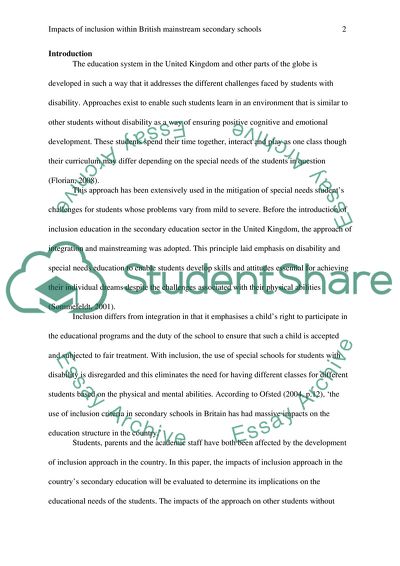Cite this document
(Impacts of Inclusion within British Mainstream Secondary Schools Coursework Example | Topics and Well Written Essays - 3250 words, n.d.)
Impacts of Inclusion within British Mainstream Secondary Schools Coursework Example | Topics and Well Written Essays - 3250 words. https://studentshare.org/education/1816329-assess-the-impact-of-inclusion-within-british-mainstream-secondary-schools-on-all-service-users
Impacts of Inclusion within British Mainstream Secondary Schools Coursework Example | Topics and Well Written Essays - 3250 words. https://studentshare.org/education/1816329-assess-the-impact-of-inclusion-within-british-mainstream-secondary-schools-on-all-service-users
(Impacts of Inclusion Within British Mainstream Secondary Schools Coursework Example | Topics and Well Written Essays - 3250 Words)
Impacts of Inclusion Within British Mainstream Secondary Schools Coursework Example | Topics and Well Written Essays - 3250 Words. https://studentshare.org/education/1816329-assess-the-impact-of-inclusion-within-british-mainstream-secondary-schools-on-all-service-users.
Impacts of Inclusion Within British Mainstream Secondary Schools Coursework Example | Topics and Well Written Essays - 3250 Words. https://studentshare.org/education/1816329-assess-the-impact-of-inclusion-within-british-mainstream-secondary-schools-on-all-service-users.
“Impacts of Inclusion Within British Mainstream Secondary Schools Coursework Example | Topics and Well Written Essays - 3250 Words”. https://studentshare.org/education/1816329-assess-the-impact-of-inclusion-within-british-mainstream-secondary-schools-on-all-service-users.


